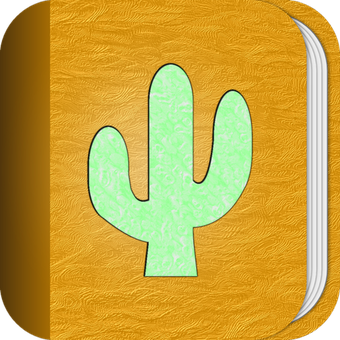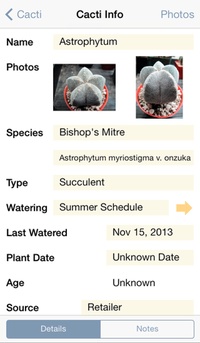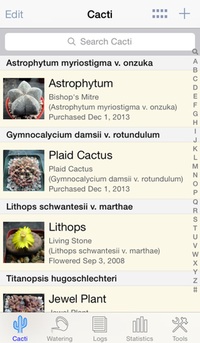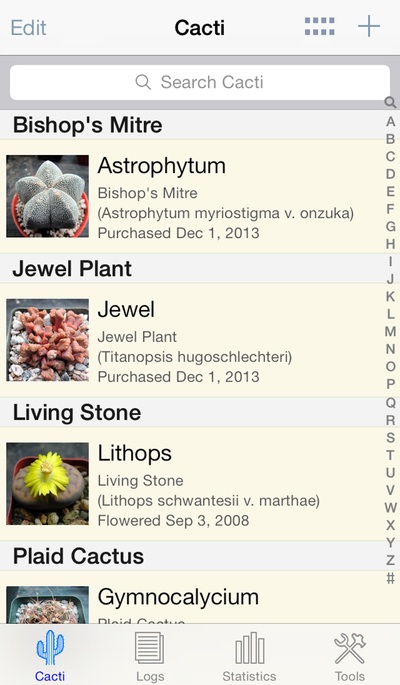Cactus Album is now available on the App Store for iPhone, iPad, and iPod touch.
Today I present my fourth iOS app, Cactus Album. Available for iPhone, iPad, and iPod touch with iOS 5.0 or higher, Cactus Album is an indispensable tool for keeping track of your cacti and succulent collection, watering schedules, and notes.
Cactus Album features the ability to store multiple full-screen captioned photos for each cacti or log entry. The photos are captured either via the device camera, or from the photo library. They are stored internally in high resolution, scaled up or down when displayed depending upon the capabilities of your device. Cactus Album takes full advantage of Retina and iPad displays, but also works great on previous generations of hardware.
The Cactus Album database itself is portable between your various devices, so you can back it up to your computer over a local WiFi network from either an iPhone, iPad, or iPod, and restore it onto another Apple device. You can also import or export data without modifying the existing data on your device, or transfer the database directly between devices.
The first and third tabs of the app display thumbnail images in table form for each cacti or log entry. In addition, the cacti thumbnail images can be viewed in a scrollable grid. This makes it easier to locate an item in your collection visually, or based on the title or species. As with my other apps, the Cactus Album user interface has been designed to make it as quick and easy to enter and view details about your collection as possible.
You can find more details on my website or on the Cactus Album Facebook page. If you’re not entirely convinced Cactus Album will work for you, there’s even a free Lite version you can try out. This version is limited to 3 cacti, 3 watering schedules, and 3 log entries with 3 photos each, and only supports backup and export over WiFi. Otherwise it’s identical to the full version.
In case you’re curious what prompted me to create such an app, you can read all about it in my earlier blog post.
If you enjoy cacti and succulents, I hope you find Cactus Album useful, and I welcome any feature suggestions and comments you may have. Enjoy!





